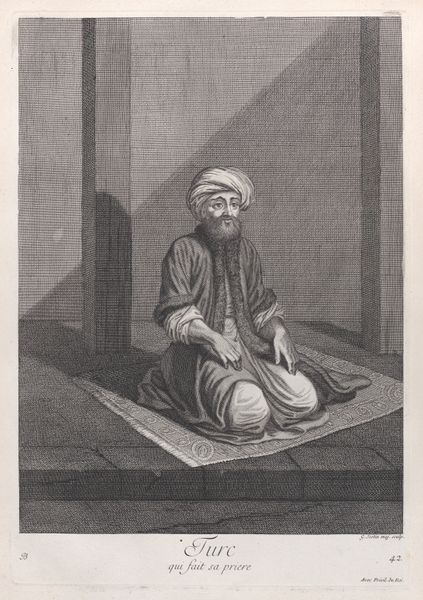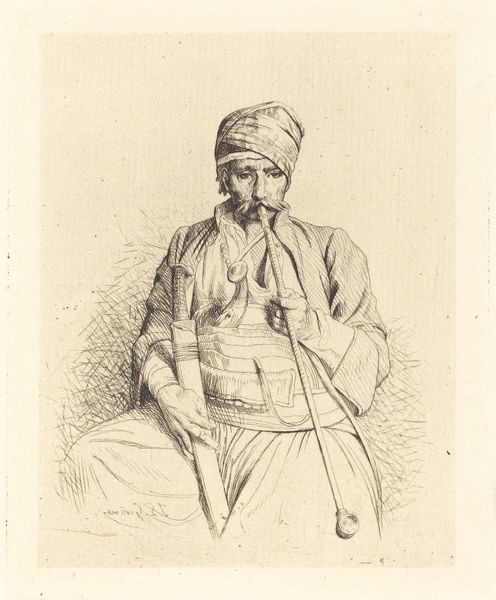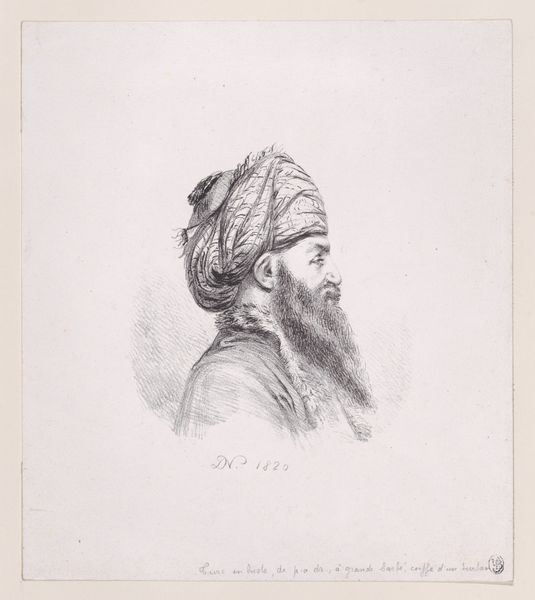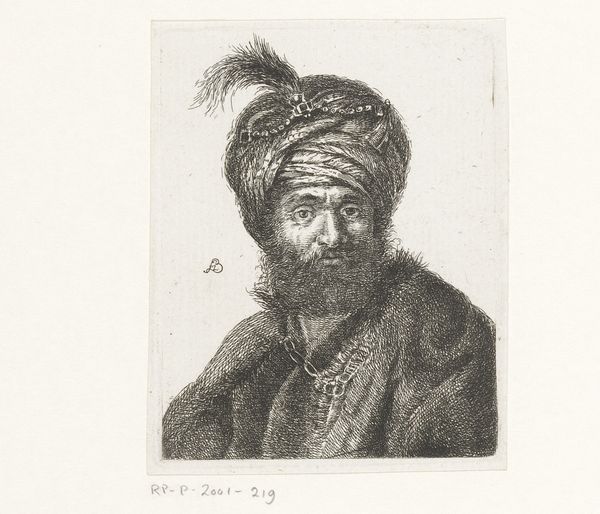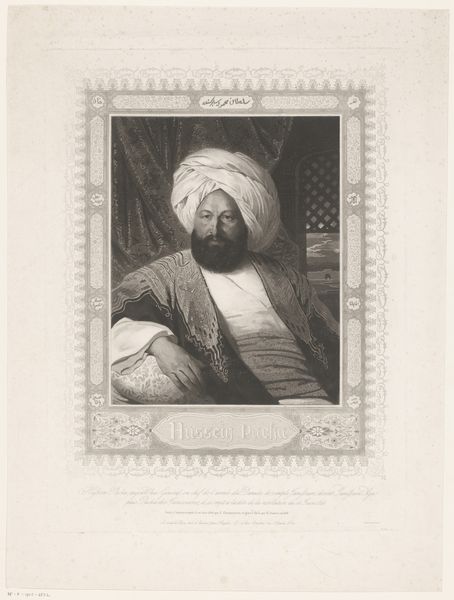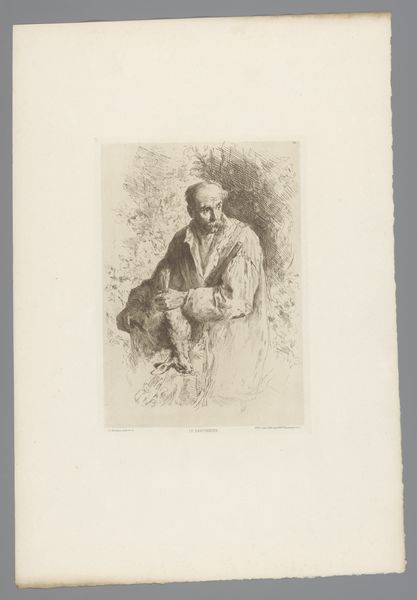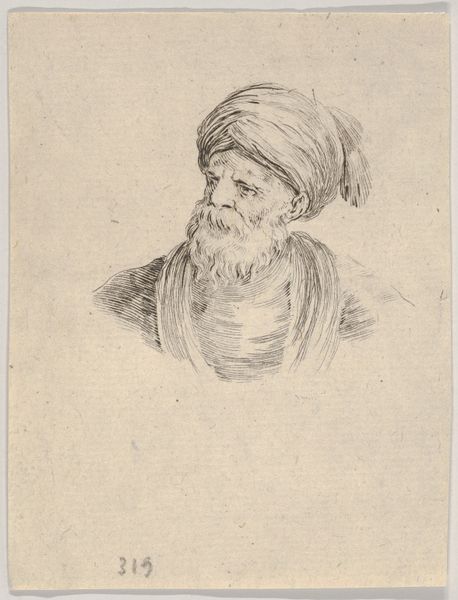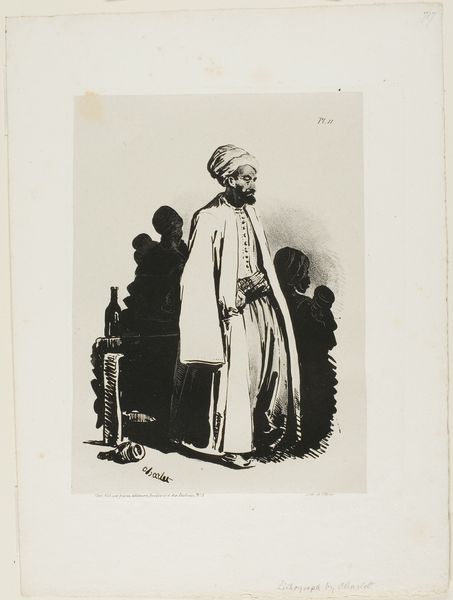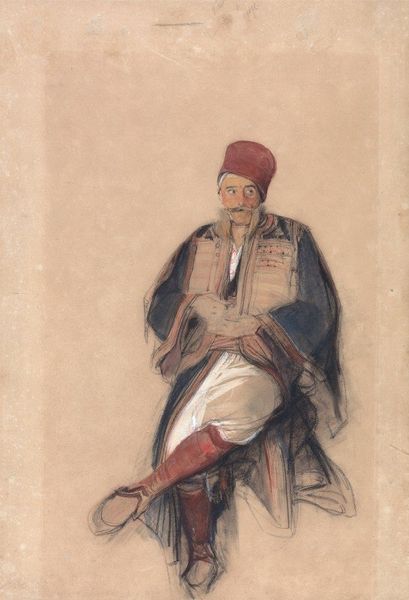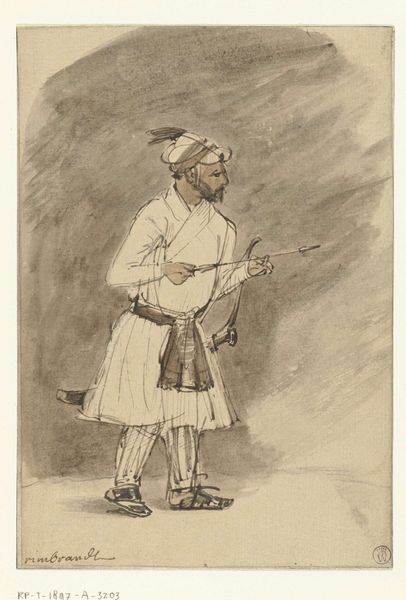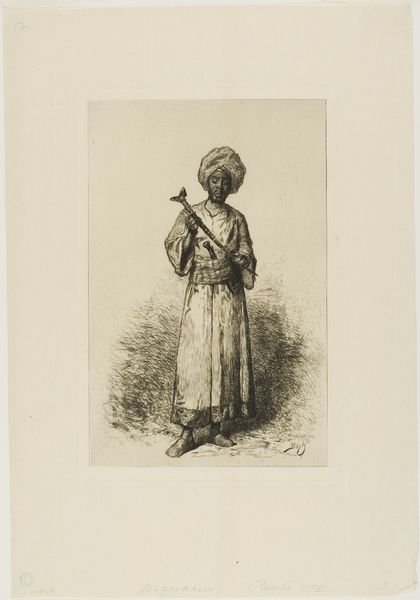
drawing, print, pencil
#
portrait
#
drawing
# print
#
pencil sketch
#
pencil drawing
#
romanticism
#
pencil
#
orientalism
Copyright: National Gallery of Art: CC0 1.0
Editor: Here we have Nicolas Toussaint Charlet’s “Seated Turk” from 1825, a pencil drawing. I'm immediately drawn to the intricate details of his clothing, especially given it's a seemingly simple sketch. What strikes you most about this piece? Curator: For me, it's about considering how and why this image was produced. Charlet, though French, is engaging in Orientalism, depicting a Turk through a Western lens. How does the material – the pencil drawing – contribute to this? Is it about capturing the “essence” of a subject quickly and efficiently? Think about the mass production of images facilitated by printmaking, bringing these representations to a wider audience and further shaping perceptions. Editor: So you’re saying the choice of pencil and its reproducibility influences the cultural impact? It wasn’t just about the artistic skill involved? Curator: Precisely. The pencil, a readily available and inexpensive material, makes the image accessible both in its creation and dissemination. It speaks to a certain level of commerce, where “exotic” imagery catered to Western fascination could be reproduced and consumed widely. Consider the labor involved in creating multiple prints and the potential profit derived from it. Editor: I hadn’t thought about it in terms of labor and profit like that. It’s easy to just see the artistic merit. Curator: It’s about pushing past that. Where were these prints sold? Who was buying them, and what did they do with them? This all contributes to understanding the cultural and economic forces at play. Editor: So much more than just a “portrait." I'll definitely consider the materiality and its context next time. Thanks! Curator: Indeed! It's a constant negotiation between aesthetic appreciation and critical awareness of the art's means of production and cultural role.
Comments
No comments
Be the first to comment and join the conversation on the ultimate creative platform.


